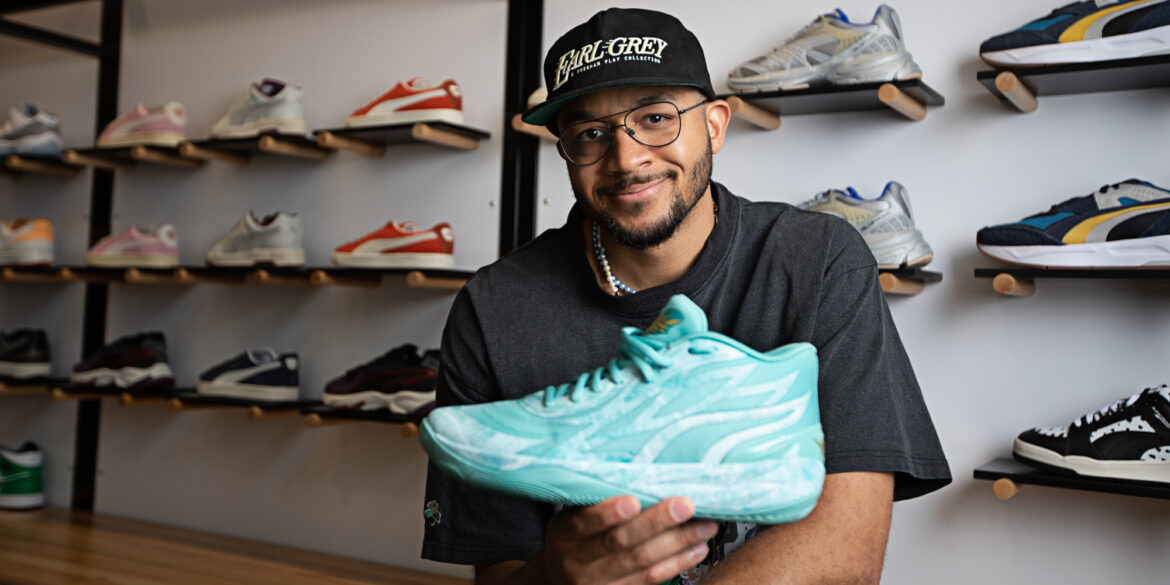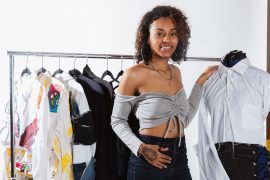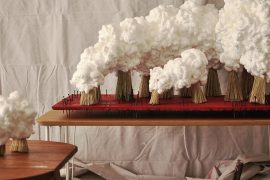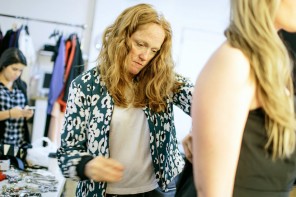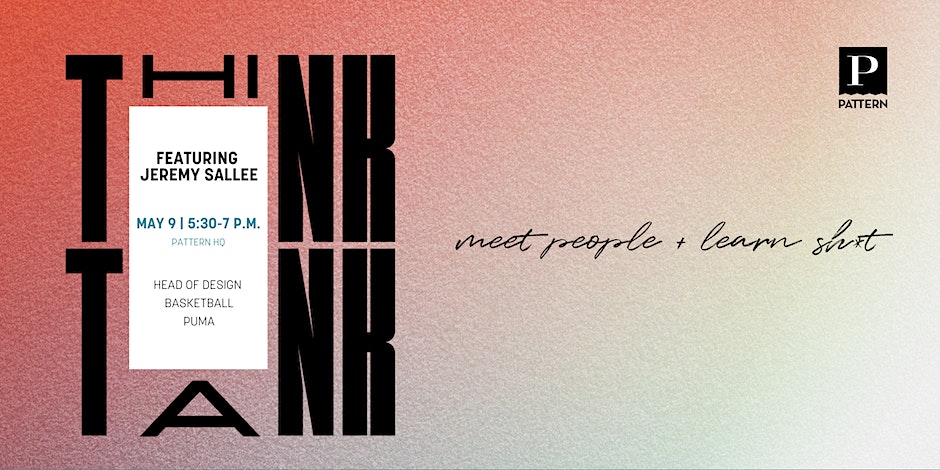
Calling all sneakerheads: Join the conversation with Jeremy at The Harrison Center on Tuesday, May 9 from 6:00 P.M. to 7:00 P.M. Doors open at 5:30 P.M!
Special thank you to Corporate, Inc. for providing the location for this month’s digital cover shoot.
This cover story is presented by Life in Indy. From exploring Indy’s top attractions to connecting with leading employers, Life in Indy is the go-to resource on all things central Indiana. Visit the Life in Indy website for a virtual tour experience and explore our community!
Jeremy Sallee is no stranger to a good shoe. As a lifelong basketball player, he was introduced to the importance of a nice playing shoe at a young age. Sallee’s sneaker sketches started at the age of eleven, when he decided he could improve upon the basketball shoe designs he saw while shopping for new kicks. Now, as the Head of Design at Puma Basketball and founder of his own apparel brand, Freeman Plat, Sallee’s sketches are better than ever, having made it off paper and onto the streets. His designs are worn by athletes, celebrities, and sneakerheads across the country—you might even have a pair in your own closet. Sallee has played a key role in shaping PUMA’s design direction and has been credited with creating some of the brand’s most iconic products, such as the RS-Dreamer, MB .02, and Stewie 1.
Sallee is now back home again in Indiana after more than a decade spent on the East Coast, where he moved following his graduation from the University of Akron in 2009. The gang here at PATTERN managed to squeeze our way into Sallee’s schedule to chat about creating a career path, lessons learned from the sportswear design industry, and his experience returning to the Midwest.
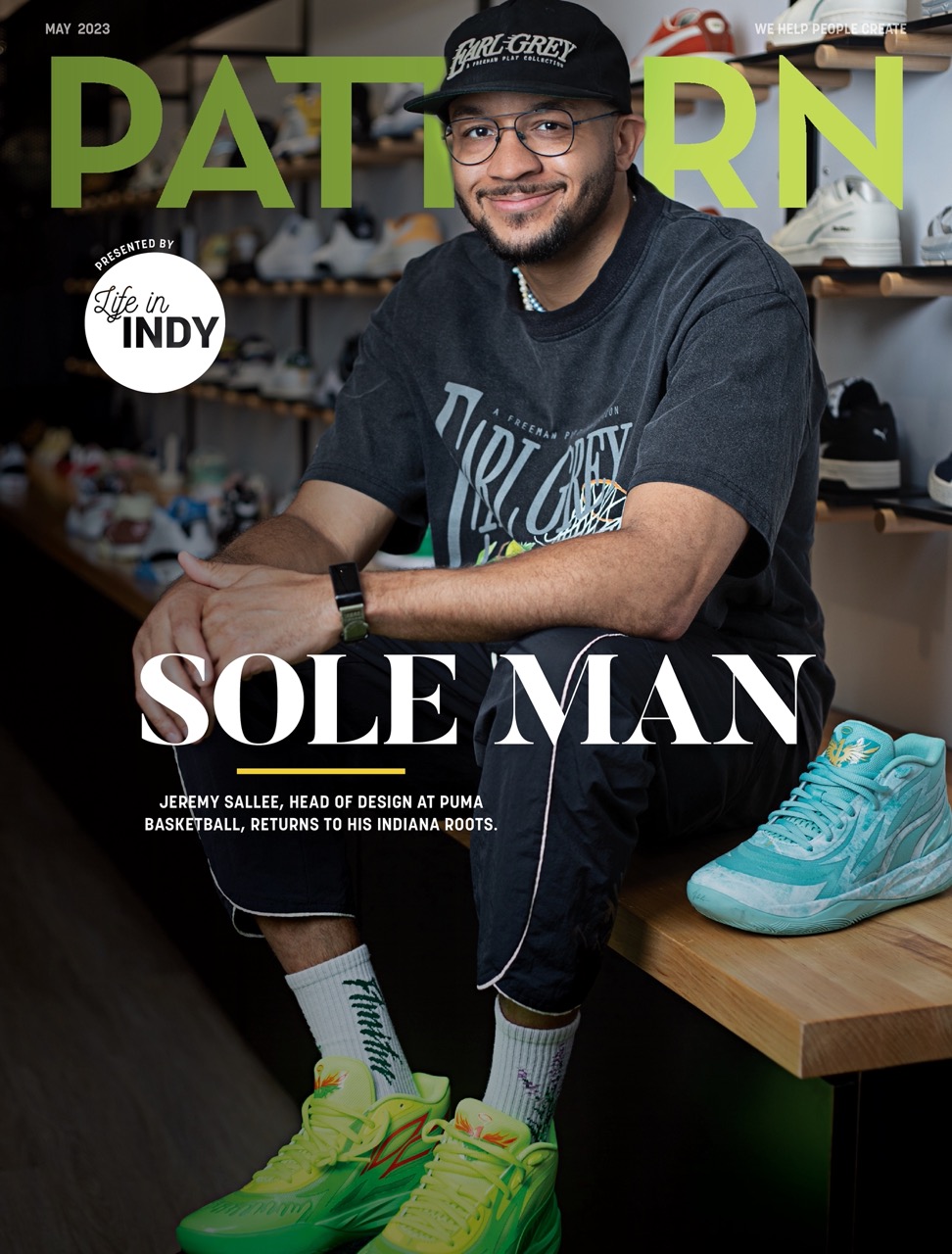
Katie Freeman: So, we’re talking about the boomerang effect this month, which refers to this phenomenon where people leave Indiana, move somewhere else, and then eventually come back! Tell me about your Indiana boomerang experience.
Jeremy Sallee: I was born in Indianapolis and moved to Cincinnati when I was seven. I lived in Cincinnati until college, but I was back and forth because my dad lives here. I would say I’m from Indiana via Cincinnati—that’s my definition of where I grew up. I went to Case Western University in Cleveland my freshman year, and transferred to Akron University to play basketball there. I graduated, moved to Boston to go work at Reebok as an apprentice for a year, and got hired halfway through the apprenticeship. I was at Reebok for eight years. Then I moved to New York to go work for Ralph Lauren as the design director of Polo Sport. They call it “Ralph Lauren University” because no one stays longer than like, two years [laughs]. So I stayed there for almost two years and then I went to Puma. I worked remotely from Brooklyn, New York when I first started working at Puma, even though the office is back in Boston. During COVID, I moved back to Indy in 2020 without seeing the house. We just bought a house and moved because it was COVID outside. It was not fun. Now we’ve been living the suburban life in Carmel.
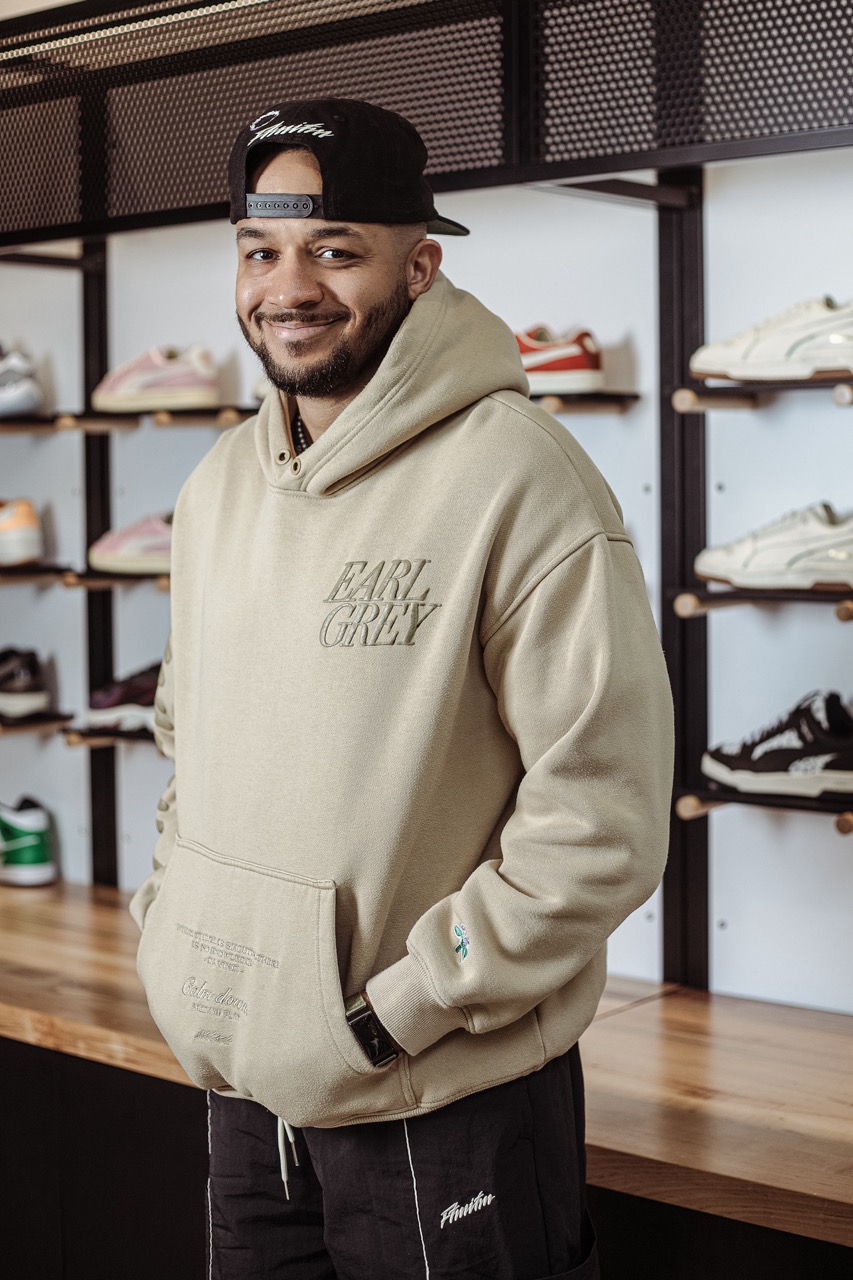
KF: What led you back to Indiana?
JS: First of all, the pandemic. Secondly, my son was one, plus a couple months. He had just started walking, and we own a duplex in New York. We lived on the top floor, so it was about to start pissing our bottom-floor tenants off downstairs. It was the perfect timing to get out of there and get him some more space. It was a blessing in disguise because we got to come back to family. Everybody’s here. My siblings are here! We’ve got cousins here! My parents are here… So we’ve got babysitters! There’s stuff that we definitely didn’t have in New York that is way easier to have here.
KF: So Boston and New York—what lessons from those places have you carried back to Indiana with you?
JS: I mean, tons of lessons. I lived in Boston the majority of my adult life. And still, I’m back and forth because I work out of the Boston office for Puma. Boston was my first time living outside the Midwest. It’s a different lifestyle. Everybody gets married at thirty-three, thirty-five, forty years old. I thought that was crazy because we get married right after college—or before college—and we have babies immediately! No one did that there. That was interesting. Also, walking in the city and having a city lifestyle. My third apartment in Boston, where we lived the majority of the time, was between the city and the beach. I could walk to the beach, or get on the train and go to the city. Living in that environment was dope. We ate a lot of food that we probably couldn’t get here as much. Seafood was definitely different because I’m a seafood fanatic. Coastal living definitely gives you access to a lot of things we don’t have here.
KF: Is there anything you learned from working within East Coast office culture that has helped you in your career?
JS: Designers, in general, tend to hold designs back and don’t want to show them until they’re done. But I didn’t actually go to school to be an industrial designer. I had to make my own curriculum: fashion, graphics, and business. My point of view was different. My perspective of how to get things done was different. I used to draw a shoe every day and then put it up on my wall in front of my desk as an apprentice at Reebok. You get noticed that way. I don’t know why everyone didn’t do that. I got noticed quick. Swizz Beatz walked down the hallway once, saw one of my sketches, and that ended up being his “signature” shoe (Kamikaze 3). That worked for me, doing something in the office that was different from the majority of the designers that were there. I got to work with a lot of celebrities and artists early, which was nice. It got me used to understanding that they’re just normal people
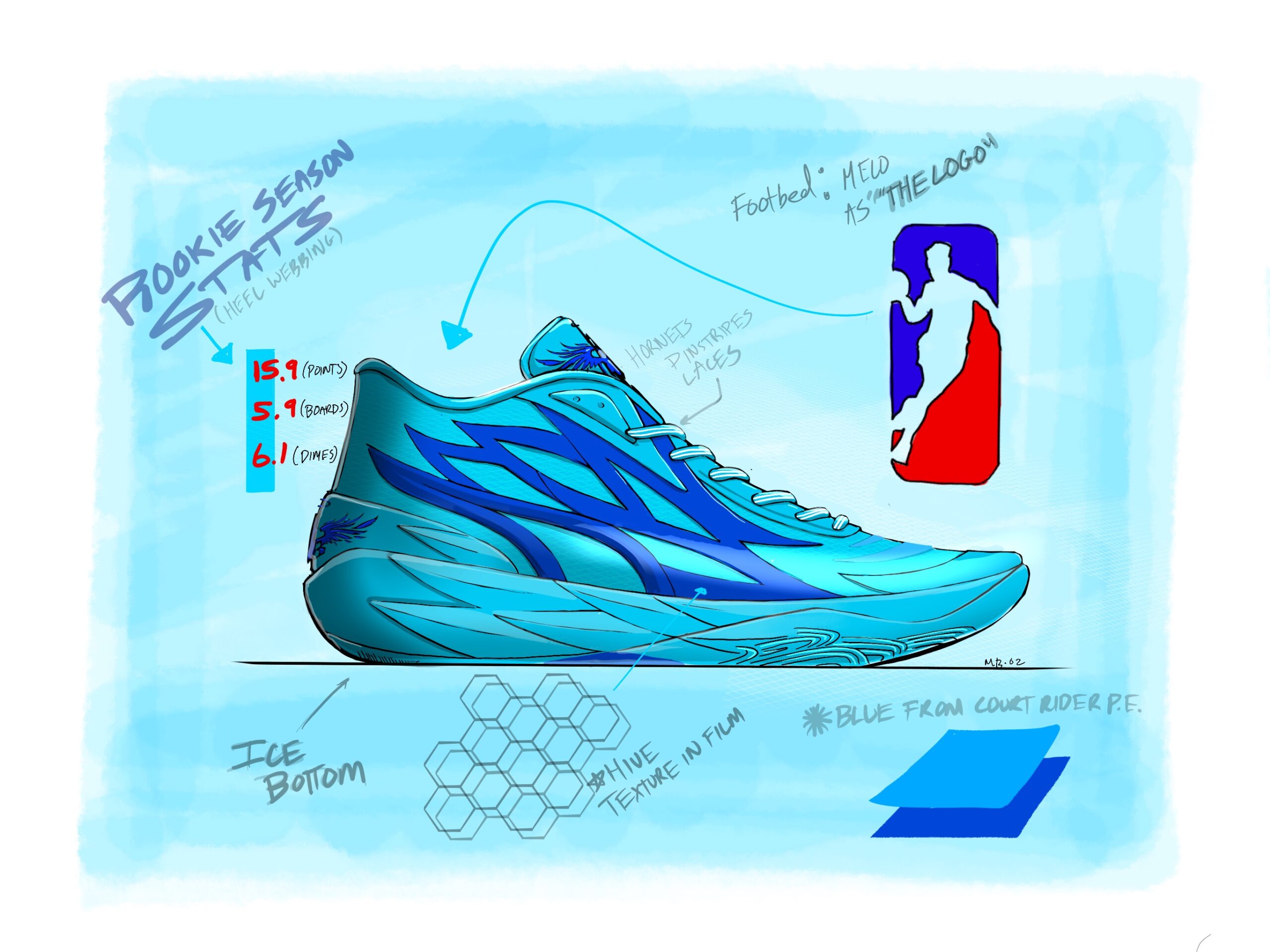
KF: Ooh! Tell us some big names you’ve worked with.
JS: Well, the first person was Swizz Beatz. I’ve done shoes for Rick Ross and Travis Scott, back before he was huge. Kendrick was a fun one; he’s a super good dude. Allen Iverson, Shaq. That was at Reebok. Then I went to Ralph Lauren. I met Ralph; Ralph is good people. At Puma, we work with a lot of athletes. J. Cole is one of my favorite people to work with. I feel like I can call him my friend now. We’re working with LaMelo Ball right now. Scoot Henderson—he’s gonna be a top draft pick this year—he just signed to us.
KF: For a lot of people, working with all these celebrities would be the pinnacle of their career, but you’re still moving onwards and upwards. What are some other goals you are working towards?
JS: For me, it was never about the celebrity part of it. It was more about the product. My dream as a twelve-year-old was just to have a shoe that was out in the streets. That’s always been the motivation, to see regular people with my shoes on. One of the best experiences I had was in FedEx a couple of years ago. I had on the J. Cole shoes, and one of the FedEx guys saw them and was like, “I just got them this morning!” I told him who I was and that I designed them, and it was amazing. Stuff like that is more motivation than anything. I mean, a lot of these cats get paid a lot of money to wear a product that has their name on it. Seeing regular people is super motivational. Now that I’m in basketball one hundred percent of the time, I want to make the next best basketball shoe in terms of look and performance. Just trying to beat the guys out on the West Coast as much as possible. That’s my number one goal: to take market share from them.
KF: Is there a lot of East vs. West-Coast competition in the shoe scene?
JS: New York, Boston, Portland, and LA are the four hubs for North American sportswear. It’s Adidas and Nike over there, and then over here, there’s New Balance, Converse, Puma, and Reebok. Those are the four cities you’re going to live in if you’re going to do shoes.
KF: But you live in Indiana! And you travel a lot, which I’m sure can be chaotic. How do you keep calm and stay focused while being on the go so often?
JS: First off, it’s a blessing to work from home, because I have a four-year-old and a wife that I like to be with as much as possible. When I got to work remotely for the first time in Brooklyn, my son was super young. So that was perfect timing for me to help my wife and be around my kid as much as possible. That’s already calming enough.
I have to fly about twice a month. That is probably a lot for a lot of people. But for me, I can fly to North Carolina for just a day and come back if I’m working with LaMelo. Or I fly to Boston on a Tuesday morning and then leave Thursday after work. So I get three days in the office. There are bigger trips, like going to Asia for two weeks or going to Europe for a week. We have fun with it. Inspiration trips happen off of those trips. So when we’re going to a development trip in Vietnam, we might stop in Tokyo on the way back for four or five days. We’re going to Italy this next month. We get to experience a whole lot of stuff and it gives a lot of perspective and inspiration from different cultures.
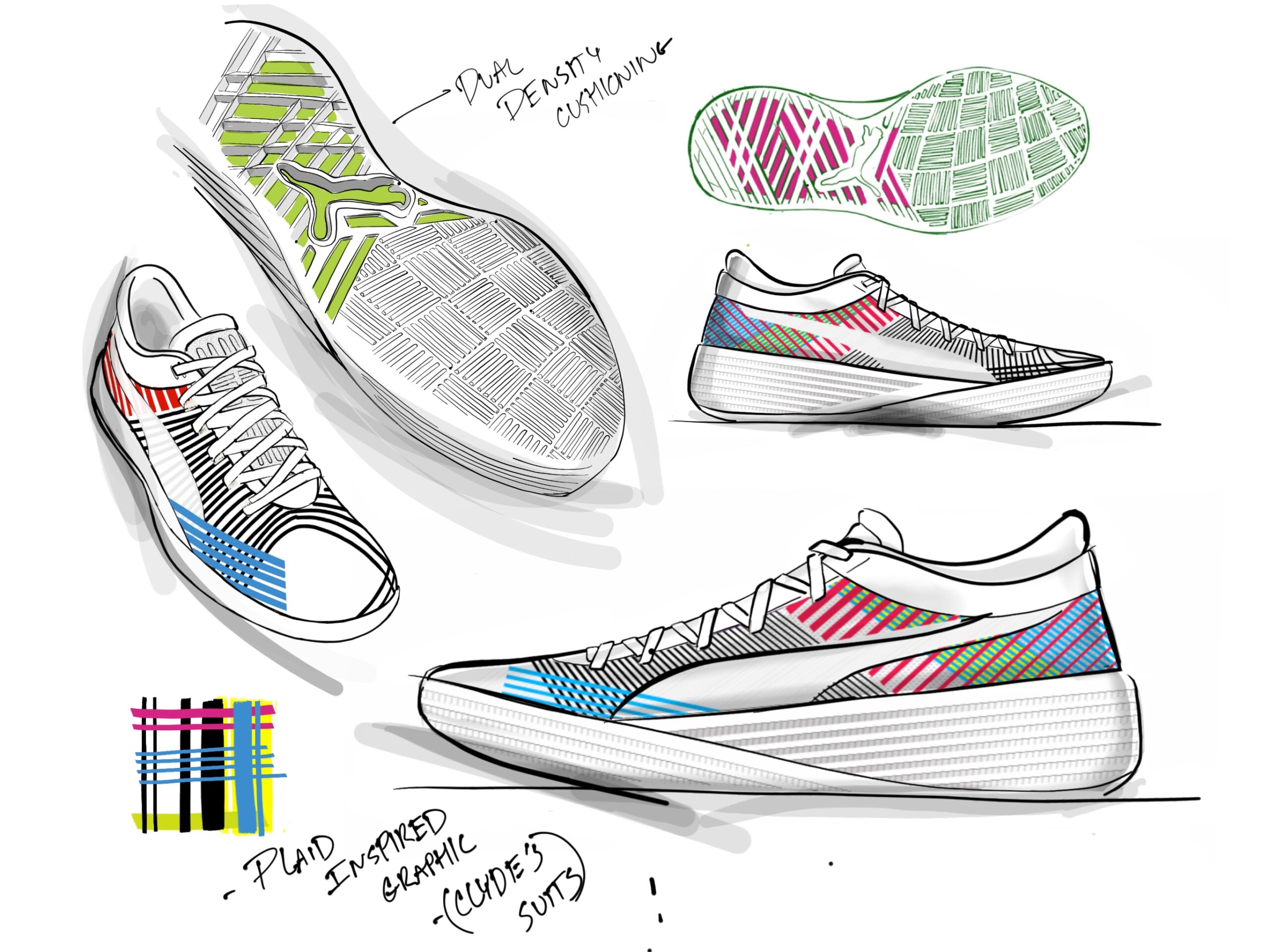
KF: I think most people assume that creative careers like this only exist in those larger cities you mentioned. Did you ever anticipate that you’d be able to have the career that you do while living here in Indiana?
JS: This is not normal at all. I would not get everyone’s hopes up for remote working for design jobs. What happened was, I tore my Achilles before my son was born. When I was working at Ralph Lauren, I was sort of depressed, and I just started drawing basketball shoes and putting them on Instagram. I ended up getting a couple of offers from all the big brands. I chose Puma because the guy that recruited me actually worked with me at Reebok, and he said I could work from home. He was just trying to get me over there knowing that I was in Brooklyn. It was like a thirty-minute flight to Boston. It was strictly a blessing. There’s no other explanation for why I’m able to do what I do. I didn’t do anything special but work hard and build my name up. I am extremely blessed to work remotely, especially now that we’re back in Indiana.
KF: It seems to me that this is a common theme in your career, doing things differently. I keep going back to how you said when you were in college, you created your own curriculum: one that was specifically geared towards the career that you wanted to pursue, even though there was not a specific major available for it. Can you tell me a little bit about the importance of paving your own way when there’s not a set path to follow toward your goals?
JS: Now that you say that, a lot of my life is not the normal path to get to places. I think when I get passionate about something, I’ll do it as much as I can, try to get as good as I can, and work hard to a point where there’s no other option but to succeed. I also have the thought that if you fail, it’s not a failure, you’re just learning and growing from what happened.
It’s also always been someone that’s hopped in to help me. For example, the college thing. I was a graphic design major first. And during a review, one of the teachers was like, “What do you want to do? I see a lot of shoe stuff.” I said I wanted to design shoes. And she said I could design my own curriculum. Without that, I probably wouldn’t have been in the same situation either. Then, before I got the apprenticeship at Reebok, I had an internship at the Vince Camuto Group. With two months left in my senior year, the line crashed and they closed it down. I lost that job I was going to have after college. Luckily, the apprenticeship at Reebok popped up. Someone sent it to me. I signed up for it and got one of the ten positions available out of 500 applicants. I got hired halfway through the apprenticeship after having nine new shoe designs make it to market.
My dad always says, “Patience and persistence.” You just be persistent with what you’re passionate about and work hard and believe that it’s going to be okay. It’s gonna work out in your favor. That’s a life lesson, really. That’s more than just a work lesson. If things look bad right now, it’s okay. Just keep working through it. It’s gonna be alright. Everything leads to something else. It’s all connected. Just keep growing.
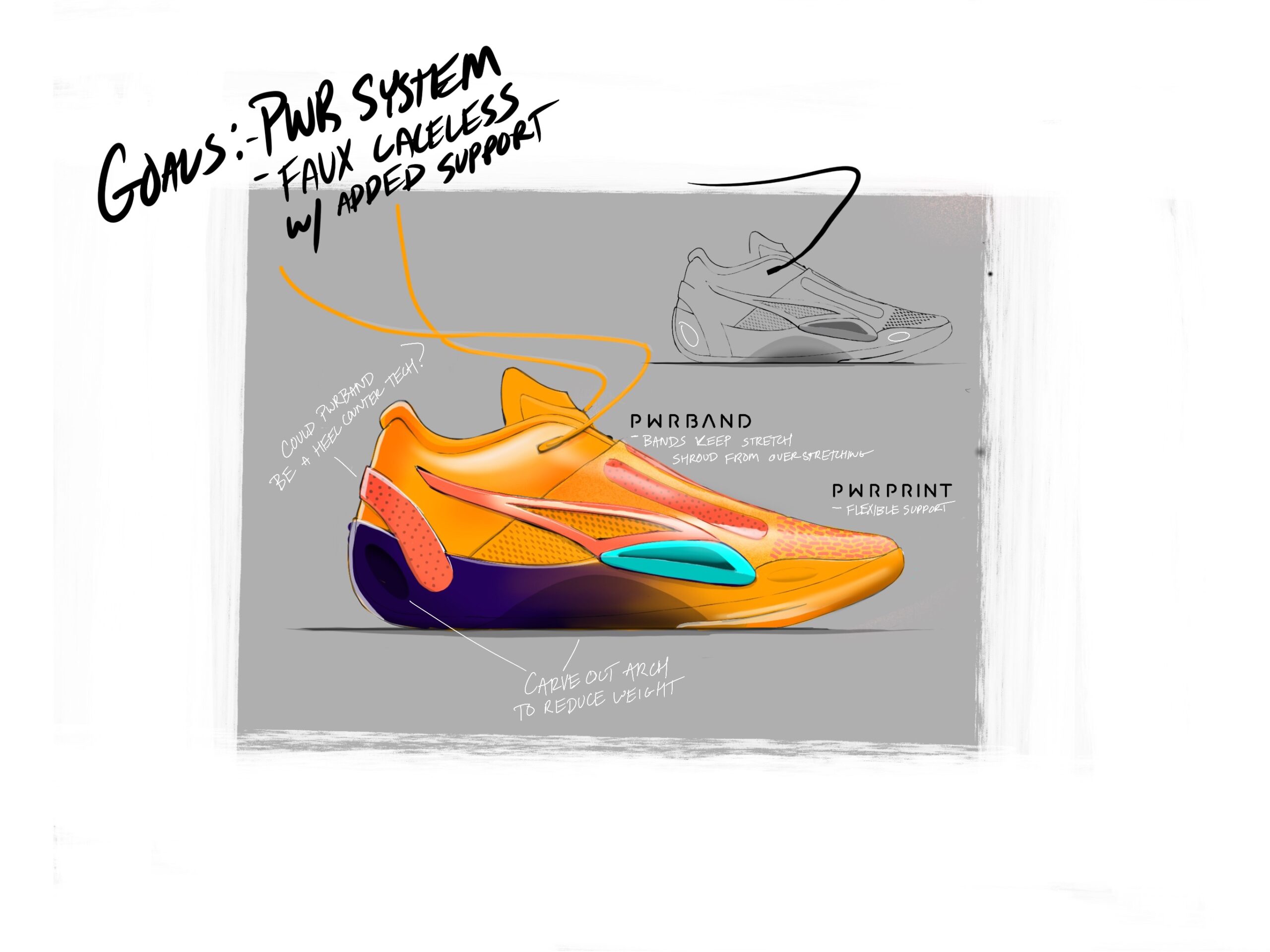
KF: On top of that, you’ve created your own brand. Tell me a bit about Freeman Plat.
JS: Basically, my favorite animal is a platypus because it does all kinds of different things (hence the ‘Plat’). It kind of represents me a little bit. Freeman Plat started in college. My curriculum that I designed was based around having my own company. After graduating, I worked on it a little bit, but I knew I couldn’t design shoes while I was at Reebok. Or I thought I couldn’t, until I built my name up to a point where they couldn’t fire me for stuff like that. I went and sat down with the now-CEO of Reebok and told them I was about to start a shoe company. But the way to get around the non-compete stuff was to make dress shoe hybrids, like athletic shoes with leather bottoms. I was trying to do stuff that wasn’t a conflict of interest between Reebok and Freeman Plat. I did apparel and footwear made in Portugal, and then sooner or later in Italy.
It’s still going now. I was trying to get rich off of Freeman Plat in the beginning, because I was young and hadn’t had a kid yet. But after all the things that have happened in my life, growing up and having kids and being a married dude, the brand direction shifted after COVID. Now I have a collection called Earl Grey, which is technically a Freeman Plat collection. It’s based on doing stuff that makes you feel calm. during COVID, I was getting kind of down. I tried painting and I was like, “Oh, I can actually paint. I’ve never painted before, but I can do this.” It was therapeutic, and at the same time, it was something I could use in my product and tell a story with. So every season, I do a painting and put it on the product. And that’ll be the seasonal collection based on whatever that painting is. Now I just do stuff that I like to wear, like hats, hoodies, socks. No footwear right now—just comfortable casual stuff that goes with being calm and cool.
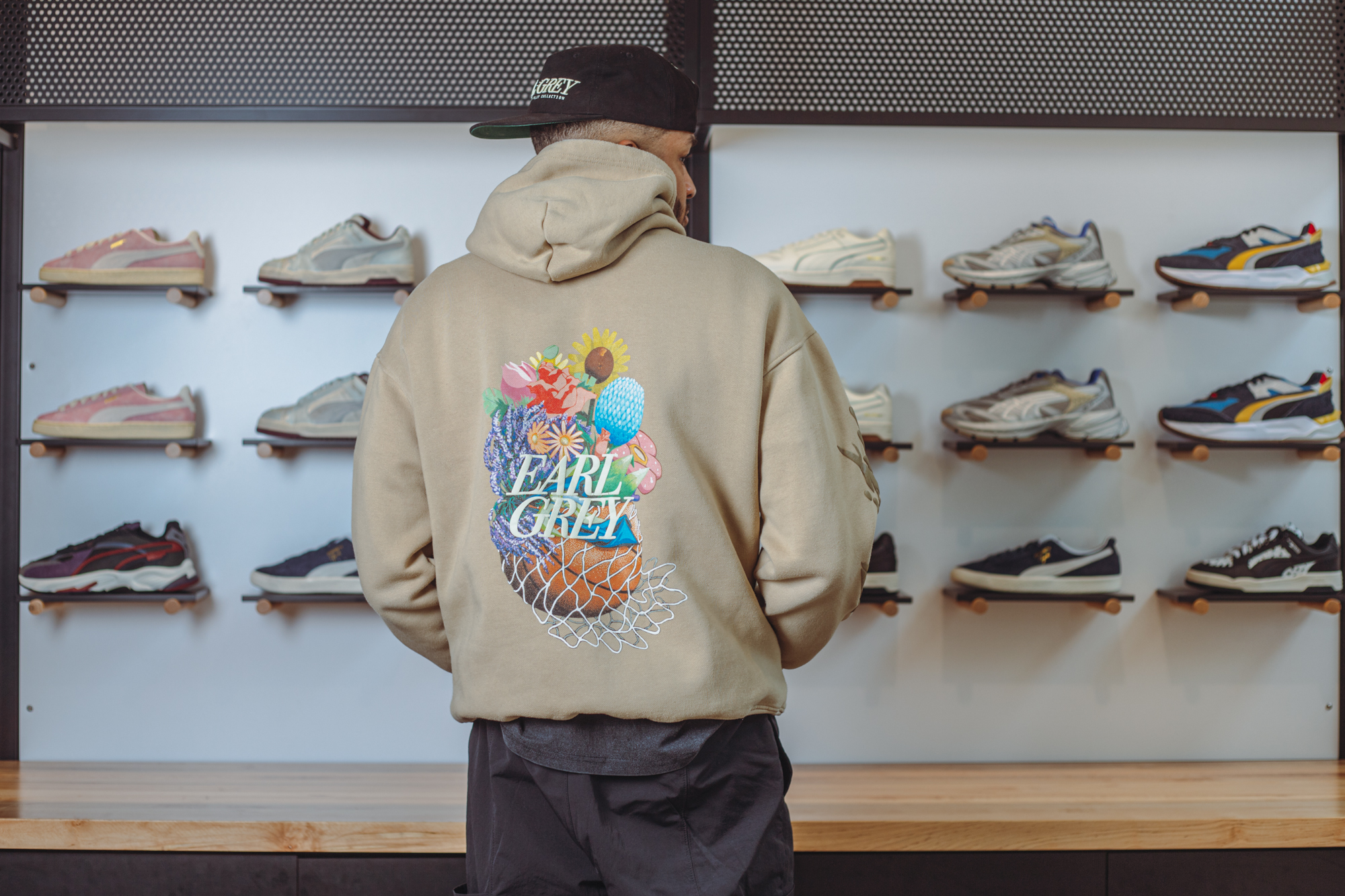
KF: Those elements of feeling calm, collected, and cool are very important as a creative, especially when it comes to avoiding burnout. Is designing those collections a kind of creative outlet for you as you balance your other responsibilities?
JS: That’s exactly what it is. Even with the designers that work for me at Puma, when I sat down with them when I became the Head of Design, I asked them what their side gig was. I encourage having something to do after work because it is a creative outlet. It’s a responsibility outlet. It’s a decision-making outlet where you have all the control. So when little stuff comes up in the office, like someone says “This needs to be black instead of red,” and you’re feeling a certain type of way about it, it’s easier to compromise creative opinion. Then you can go home and do whatever you want to do with your own stuff. It’s a nice way to keep life balanced and it’s fun.
KF: So with Freeman Plat, the “Freeman” portion refers to a person unbound by the constraints of society, who can accomplish things in all walks of life. Can you give me an example of a time you’ve overcome societal constraints?
JS: For me, it’s probably being able to adapt to things, work through issues, and persevere. Being open to new things. Being curious about new things and how things work. A big thing that could help society is if everyone got out of their bubbles. Even just to travel to another part of the country. We’d have less polarized thoughts and more healthy conversations instead of everybody being mad at each other. It’s okay to have different opinions, but we’d just have better perspectives.
When I first went to Vietnam, I saw they had less financial means. The crazy thing was, they looked way happier than anybody I knew. That perspective for other people in our country would be so big, to know that a lot of this stuff doesn’t matter. If they can be happy with what they have, you should have no problem being happy with what you have, and that perspective is a big deal. That would be the number one thing I’ve gained while I’ve been in the footwear industry: perspective.
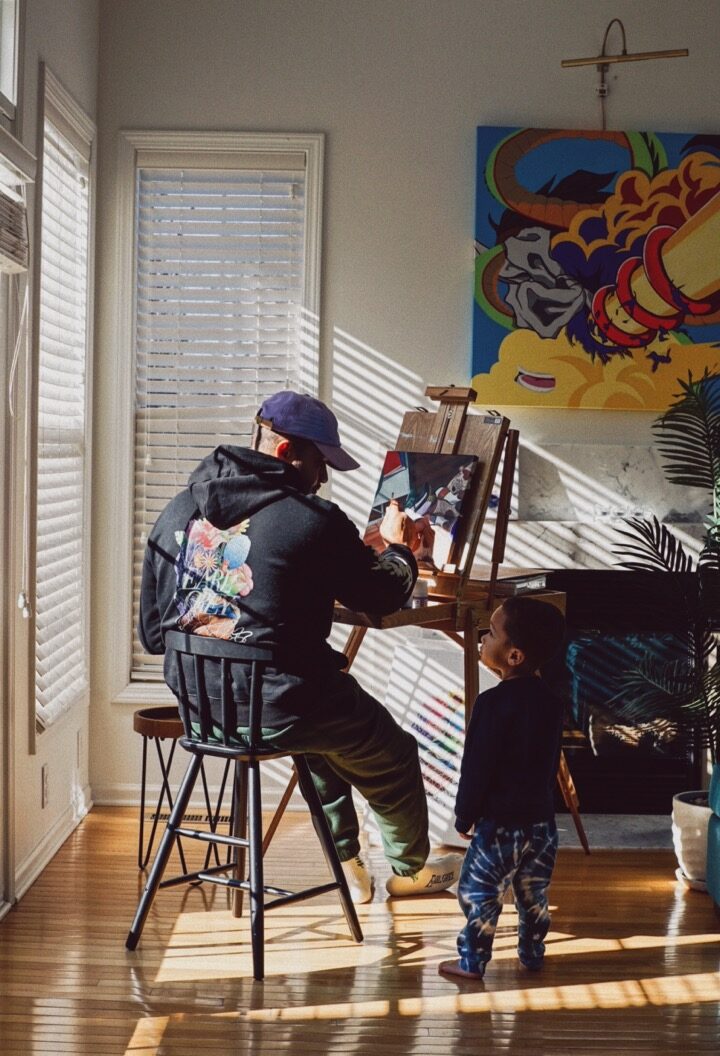
KF: Anything coming up that you’re looking forward to?
JS: I’m excited about All Star coming to Indianapolis because we’ll do something dope with a Puma lounge and all that stuff. Hopefully, Melo’s in an All-Star game next year. I’m super excited about that and what we have coming. I want to do an event with some of my designers down here, some type of panel or perspective-building thing for Indianapolis for whoever’s interested in design. Those are the biggest things I’m excited about. There’s some product stuff that’s coming that I can’t speak about, but there’s always good product coming!

